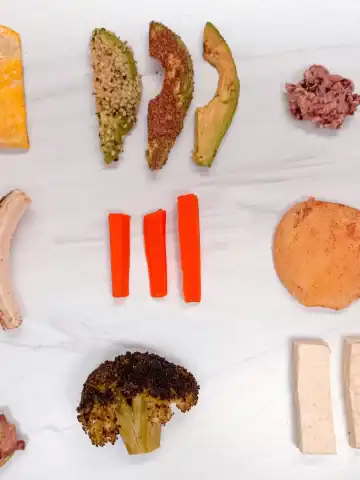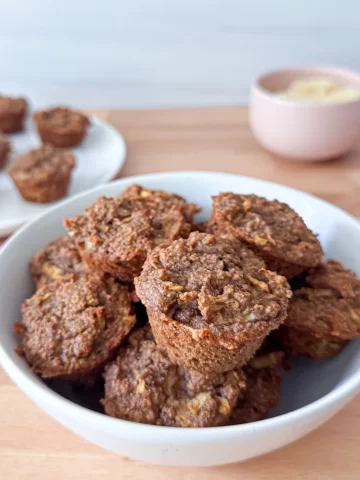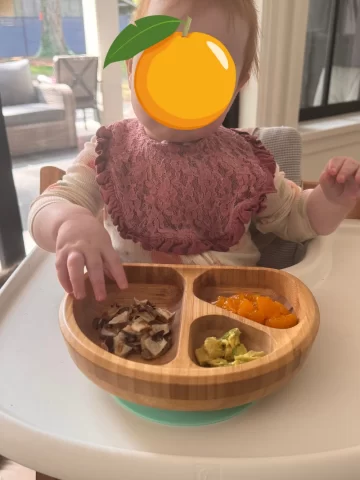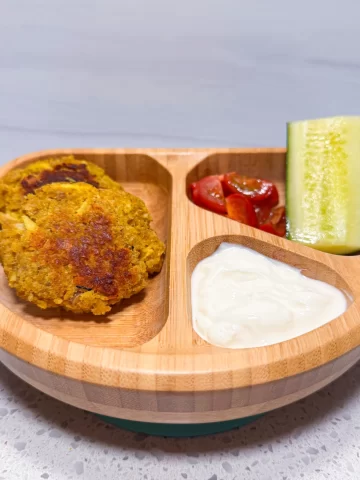Starting solids can be an exciting and overwhelming time! Here is a comprehensive guide to starting solids with baby led weaning. However, please know your approach to feeding your baby does not have to be an all or nothing approach! A combined approach where you use baby led weaning and purees can work great, the key is to follow baby’s lead. Read on to learn more!
Just a note, although I am a registered dietitian, every baby and family is unique, and this information is not personalized. Please always consult your child’s healthcare provider for specific feeding advice or reach out and book a one-on-one session!

Save this recipe!
This post contains an affiliate link, which means I may earn a commission from qualifying purchases. I am only an affiliate to brands that I use myself and truly believe in and align with. I will let you know further down in the article where the affiliate link is, and you can read more here on my Disclosures, Disclaimer and Privacy Page.
Table of contents
What are the Signs of Readiness to Start Solids for Baby?
First, let’s talk about when to start introducing solids to your little one. Age is just part of the picture. Most babies are developmentally ready to start solids around 6 months, but the signs are more important than the calendar. Here are the key signs of readiness to look for:
- Baby can sit upright (with little to no support)
- Good head and neck control
- They’re reaching for your food, watching you eat, and showing interest
- They can bring objects to their mouth
- The tongue-thrust reflex has faded (they’re not pushing food right back out)
It’s okay if your baby isn’t showing all these signs exactly at 6 months! Some babies need a little more time, and that’s totally normal. Both my girls could sit upright, had good head and neck control, and could bring objects to their mouth, but they weren’t actually interested in trying food for a few more weeks. See my example pictures of my daughter from 6 months to 7 months in this blog post here!)
Just a little side note – I was quite nervous starting solids with my first child. One thing that can help you feel ready to start solids with your baby is taking an infant CPR course, just so that you feel equipped in the case something does happen. Not meant to scare you, just helpful to be prepared!
What exactly is Baby Led Weaning?
Baby-led weaning is an approach to starting solids where your baby feeds themselves soft, safely-prepared finger foods right from the beginning, instead of being spoon-fed purées.
It encourages:
- Fine and oral motor development
- Self-regulation (learning when they’re hungry or full) and promotes self-feeding
- A positive, pressure-free relationship with food and positive mealtime behaviours
That said, you don’t have to choose just one approach! A combo of BLW and purées, like offering soft finger foods alongside pre-loaded spoons, is absolutely okay. That’s actually what we did most days, and it worked well. As long as baby is involved, responsive feeding is happening. That’s what matters most. AND know that you can choose the approach that feels best for YOUR family.
I also liked that baby led weaning really encouraged baby to explore foods and play with foods at their own pace. I certainly saw this progression with my second daughter, gradually starting to touch and play with the food more and more until she was ready to start trying it.
Research shows there is no greater risk of choking when foods are prepared safely compared to a traditional weaning approach.
How to Start with Baby-led Weaning
First, get your feeding setup ready to go! Choose a high chair that supports your baby so that they are upright and their hips, knees, and ankles are all at approximately a 90-degree angle. A footrest is also helpful to provide a little extra support. I love the Stokke Tripp Trapp high chair (affiliate link!). We’ve used a few different ones and this is by far my favourite. It does come with a steeper price tag, but it will grow with your child and last for years! And bonus, the legs don’t stick out like most other highchairs so you won’t be tripping on it. We also got the cushions and tray table accessories which have provided additional comfort. See the picture of my daughter in the Stokke Tripp Trapp (affiliate link) below. She looked so much more comfortable in this high chair compared to our Graco that we used with my first.
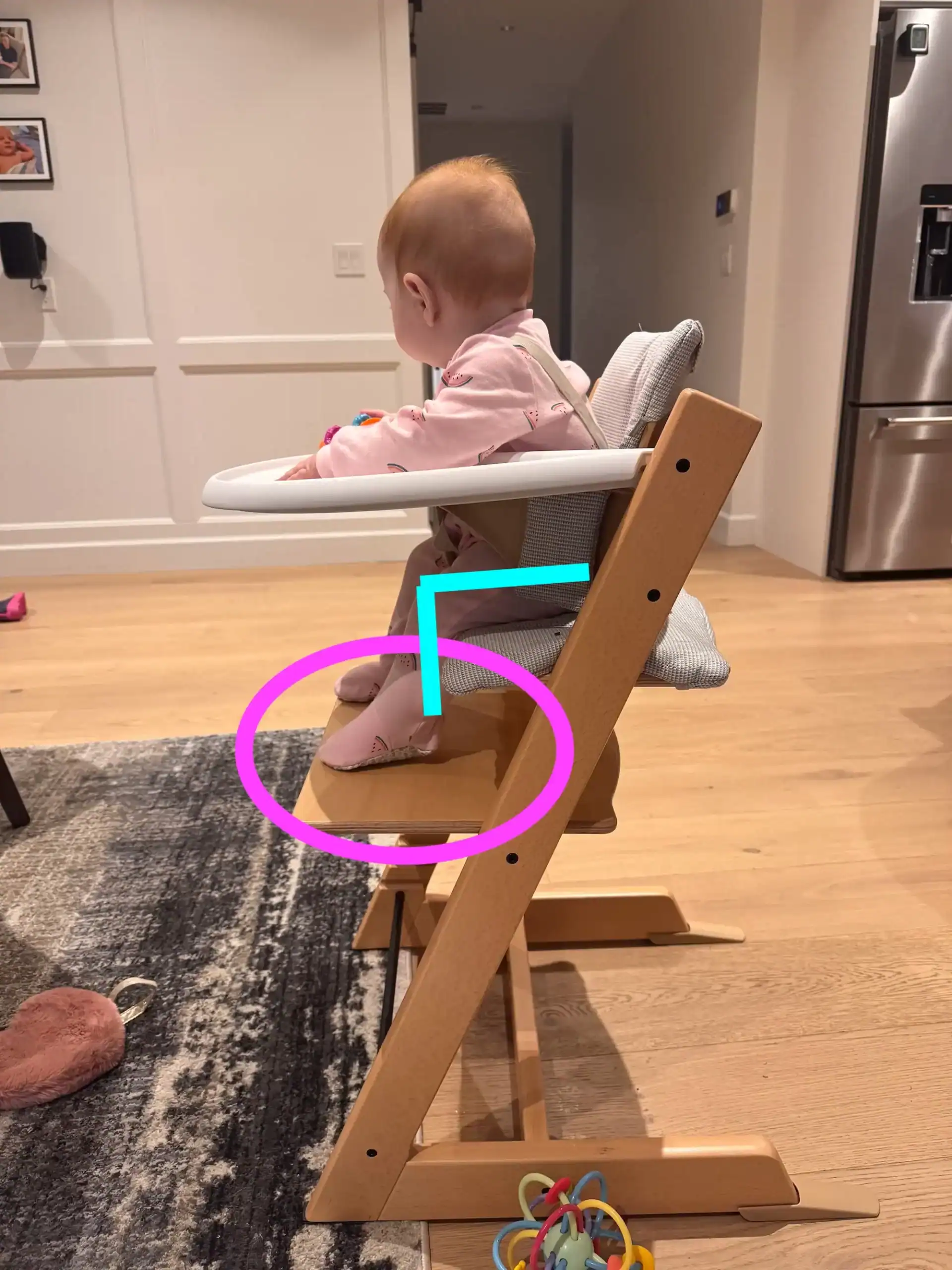
Here is a picture of my daughter in another high chair. She just didn’t look comfortable and her feet couldn’t reach the foot rest. I tried wrapping up towels but the chair just didn’t seem like a good fit for her.
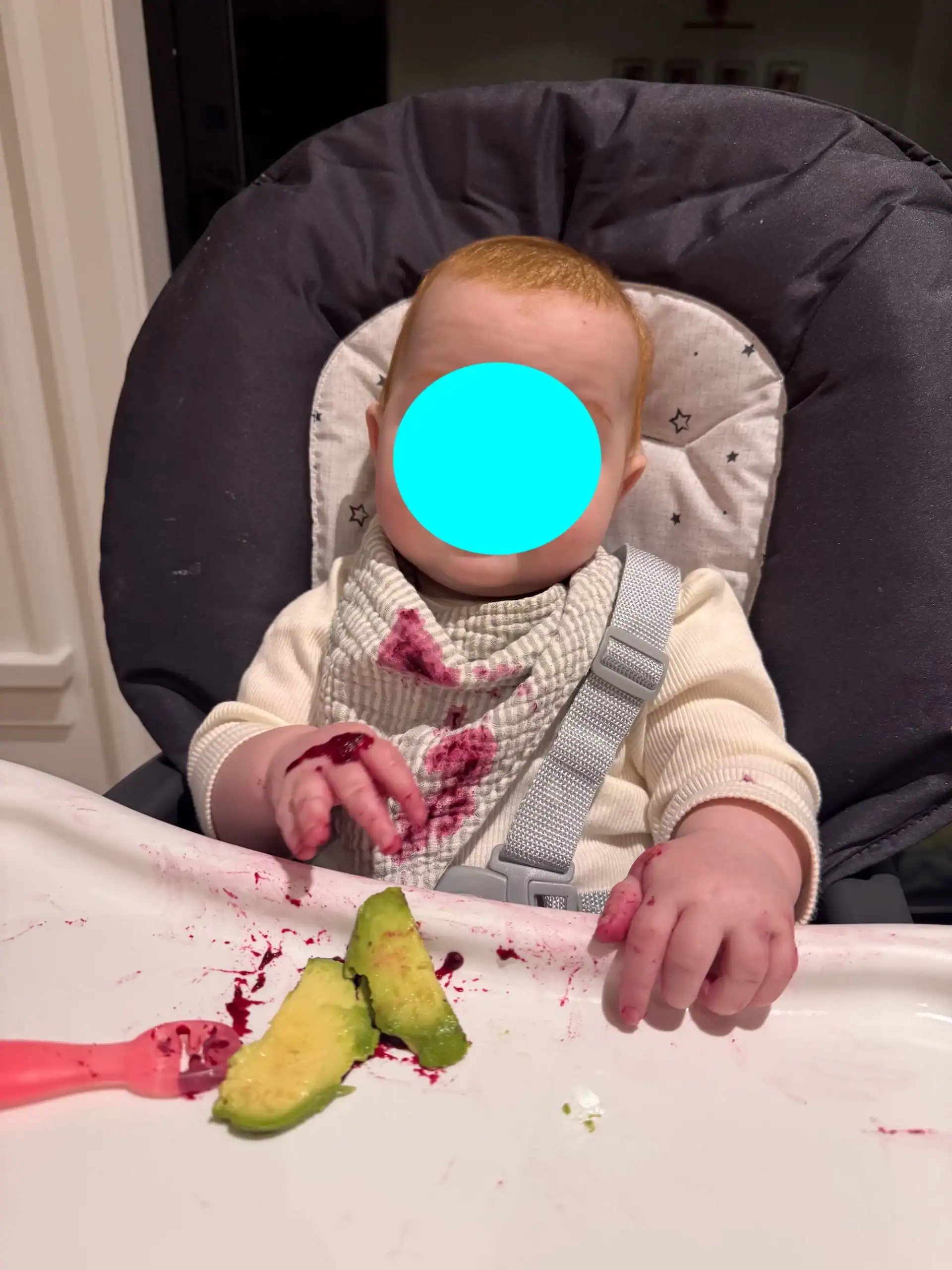
With starting solids, start slow! Pick one or two meals where you are going to offer food and increase as you both feel ready. For us, I started with lunch. You want to choose a time when your baby isn’t hungry or tired. I found lunchtime worked best for us to start as we weren’t rushing and had more time to eat together and allow my baby to explore her food.
Sample Feeding Schedule for a 6-Month-Old
At this stage, breastmilk or formula is still your baby’s main food source—solids are just for practice, fun, and exposure. We started with just one meal, and progressed to two meals after about 2-3 weeks. We tried to move milk a bit before nap time, but this didn’t always happen!
Here’s what a sample day might look like:
630/7am – Wake up, milk feeding
7:30am – Possible time to introduce solids 🥑🍌
9/930am – Nap #1 until ~1030ish
~10:30am – Wake up, milk feeding
11:30am – Solids 🥑🍌 (*This is the time that worked well for us to start with)
12:30pm – Milk feeding
1pm – Nap #2 until about 2pm
2:15pm – Wake up, milk feeding
4pm – Nap #3 until about 4:45pm
4:45pm – Wake up and milk feeding
530pm – Family Dinner, solids 🥑🍌 (optional other time)
6:45pm – Milk feeding
7pm – Bedtime
Note: Some babies will just explore and taste a few bites per day. That’s totally okay!
Texture Tips for Safe Eating
The great thing about baby-led weaning is you can generally offer foods that your family is already eating, as long as they are safely modified for baby! Here’s what to watch for:
- Soft enough to mash easily between your fingers
- Cut into finger-length strips (about the size of your pinky) so baby can grasp them with their whole hand
- Avoid hard, crunchy, sticky, or round foods that could pose a choking risk (like raw apple, whole grapes, popcorn, or thick globs of nut butter)
- Avoid serving baby any fast food or foods with added sugar or salt.
And remember—babies don’t need teeth to chew! Their gums are strong enough to handle soft foods.
What to Know About Allergens
I know this part can feel scary, but the latest research actually encourages introducing common allergens early and often, ideally starting around 6 months.
Top allergens include:
- Egg
- Peanut
- Cow’s milk
- Wheat
- Soy
- Sesame
- Fish and shellfish
- Tree nuts
Start slow: Introduce one new allergen at a time, in a small amount, earlier in the day so you can monitor for a reaction. Once tolerated, keep offering regularly! For a detailed guide on allergens, check out this post from Solid Starts.
What Foods do I Introduce First for Baby!?
Ok so you’ve got the setup all ready to go, and now it’s time! When introducing first foods to baby we want to focus on iron-rich foods, healthy fats and energy foods, variety and slow exposure to allergens. I decided to make a complete full other blog post highlighting some best first foods for babies and how to prepare and offer these foods. You can check out that blog post here Top 10 First Foods for Baby-Led Weaning!
Here are a few of our favourites that we started with!
- Baby quinoa cereal
- Banana chia pudding
- Strawberry chia jam
- Mini pancakes (perfect for baby led weaning!)
- Cottage cheese pancakes
- Iron fortified infant cereal
- Shredded chicken mashed in avocado
- Mashed beans

How To Know if Baby Is Hungry or Full?
With feeding little ones, we want to be responsive to their hunger and fullness cues. Your little one may be hungry if:
- Reaching for food or pointing towards food
- Opening their mouth at the sight of food
- Get upset if food is taken away
Your little one may be full if:
- They are turning their head away from food or closing their mouth
- Push food away
- Refuse to eat any food
And remember, we never want to pressure or force our little ones to eat food. We want to honour their signals.
Final Thoughts
Starting solids doesn’t have to be perfect. It doesn’t even have to be tidy! Let your baby explore, follow their cues, and remember that learning to eat is just that, a learning process. There will be mess, surprises, and lots of fun along the way.
You’ve got this, and I’m cheering you on at every messy step!

